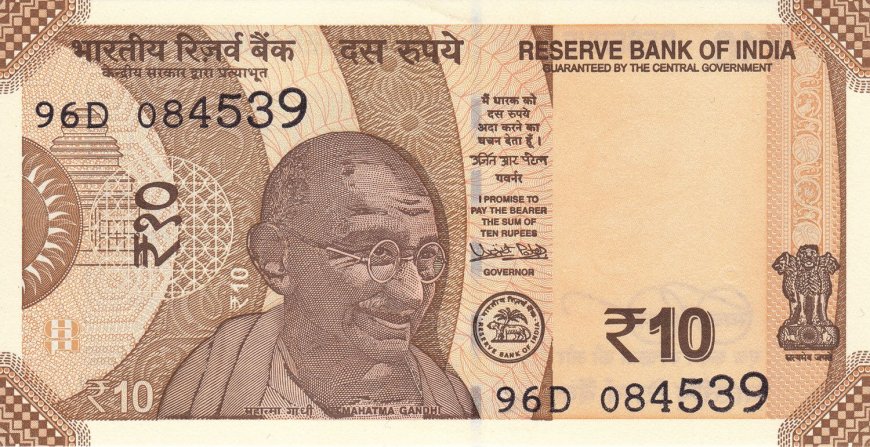10 rupee indian currency notes
The Indian 10-rupee banknote (₹10) is a common denomination of the Indian rupee. The ₹10 note was one of the first notes introduced by the Reserve Bank of India.

The ten rupee note is a widely used denomination in the Indian currency. Here are some key details about the ten rupee Indian currency notes:
-
Denomination: The ten rupee note is the third smallest paper currency denomination in India, following the one rupee and five rupee notes.
-
Design: The design of the ten rupee note has evolved over time. The earlier versions featured the portrait of Mahatma Gandhi on the front side, along with the Reserve Bank of India's seal and the signature of the Governor. The reverse side typically depicted various historical or cultural monuments or important figures.
-
Security Features: Ten rupee notes, like other Indian currency notes, have security features to prevent counterfeiting. These features may include watermarks, security threads, latent images, and microprinting.
-
Material: The earlier versions of the ten rupee note were made of paper. However, in recent years, the Reserve Bank of India has introduced polymer-based notes for increased durability and longevity.
-
Availability: The ten rupee note is commonly available and widely accepted for transactions across India. It is used for various purposes, including daily purchases, transportation fares, and small transactions.
-
Commemorative Issues: On certain occasions, the Reserve Bank of India issues commemorative ten rupee notes to commemorate special events, achievements, or personalities. These limited edition notes are not intended for regular circulation and are often collector's items.
Please note that the design and availability of currency denominations may change over time, so it's always advisable to consult reliable sources or financial institutions for the most up-to-date information.
What's Your Reaction?






















































